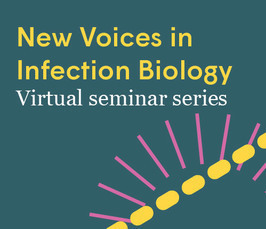Identification and analysis of the signaling pathways, matrix digestion enzymes, and motility components controlling Vibrio cholerae biofilm dispersal | New Voices in Infection Biology
- Datum: 23.09.2020
- Uhrzeit: 16:00
- Vortragende(r): Drew Bridges
- Princeton University, USA
- Ort: Zoom video conference
- Gastgeber: Marcus Taylor
- Kontakt: vseminars@mpiib-berlin.mpg.de

If you are interested in joining the seminar, please contact: vseminars@mpiib-berlin.mpg.de
Once registered, you will receive a zoom conference link 30 mins before the talk starts - please sign in using your full name.
Talk abstract:
Bacteria alternate between a free-swimming, exploratory lifestyle and existing in sessile multicellular communities known as biofilms. The ability to transition between these lifestyles enables bacteria to profit from the communal phase by collectively resisting challenges and, as individuals, to disseminate and stake out new territories when appropriate environmental conditions are met. Biofilm cells of the global pathogen Vibrio cholerae are hyper-infectious and outcompete their planktonic counterparts in the intestine. Biofilm dispersal is thought to facilitate transmission of cholera disease. Components facilitating V. cholerae biofilm formation are well-defined, however, almost nothing is known about V. cholerae biofilm dispersal. This gap in knowledge has precluded an understanding of how V. cholerae transitions between lifestyles, and in turn, has impeded understanding of a central step in pathogenicity. Recently, we conducted a high-content imaging genetic screen for V. cholerae mutants that fail to disperse. Our screen revealed three classes of components required for dispersal: signal transduction, matrix degradation, and motility factors. Characterization of these components revealed the molecular events that choreograph biofilm dispersal in V. cholerae, defining how this global pathogen transitions between its lifestyles. The results lay the groundwork for small-molecule interventions to control V. cholerae biofilm to planktonic transitions in an effort to disrupt disease progression.